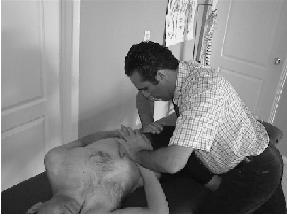Evidence for Early PT Intervention for Acute LBP
Reference:Wand BM, Bird C, McAuley JH, Dore CJ, MacDowell M, De Souza LH. Early intervention for the management of acute low back pain: a single-blind randomized controlled trial of biopsychosocial education, manual therapy, and exercise. Spine. 2004 Nov 1;29(21):2350-6.
Many researchers and authors have concluded that the best available evidence supports no specific intervention at all for patients presenting with acute low back pain (LBP). The assess/advise/wait model had been promoted to be the best approach.
Clinical practice guidelines have adopted this approach and promote the philosophy of basically telling patients “Don’t worry, be happy…and you’ll get better anyways! No specific treatment is needed nor will it help you.”
This was a blinded RCT that provided support against the assess/advise/and simply wait philosophy. In this study, patients with acute LBP were randomly assigned to an “assess/advise/treat” group or an “assess/advise/wait” group. The intervention consisted of biopsychosocial education, manual therapy, and specific exercise prescription provided by physiotherapists.
Result #1: At 6 weeks, the assess/advise/treat group had significantly greater improvements in disability, general health, social function, anxiety, depressive symptoms, and mental health than patients in the assess/advise/wait group.
Result #2: Mood, general health, and quality of life remained significantly better, even after 6 months in the assess/advise/treat group.
Result #3: In the long-term however (after 6-months), there were no significant differences in pain and disability between early and late intervention.
Result #4: If physiotherapy intervention was provided later, the same psychosocial benefits were not achieved.
What can we learn from this study? At short-term, therapeutic intervention is more effective than simple advice on staying active, leading to more rapid improvement in function, mood, quality of life, and general health.
This study needs to be emphasised to all family physicians and compensation case managers in order for them to support physical therapy intervention during the acute phase of LBP, rather than having a “let’s just wait and see” attitude.
What else can we learn from this study? Ideally, patients with acute LBP should receive early physiotherapy intervention and biopsychosocial education in order to receive the significant psychosocial benefits demonstrated in this study.
Posted on: April 26, 2007
Categories: Lumbar Spine


